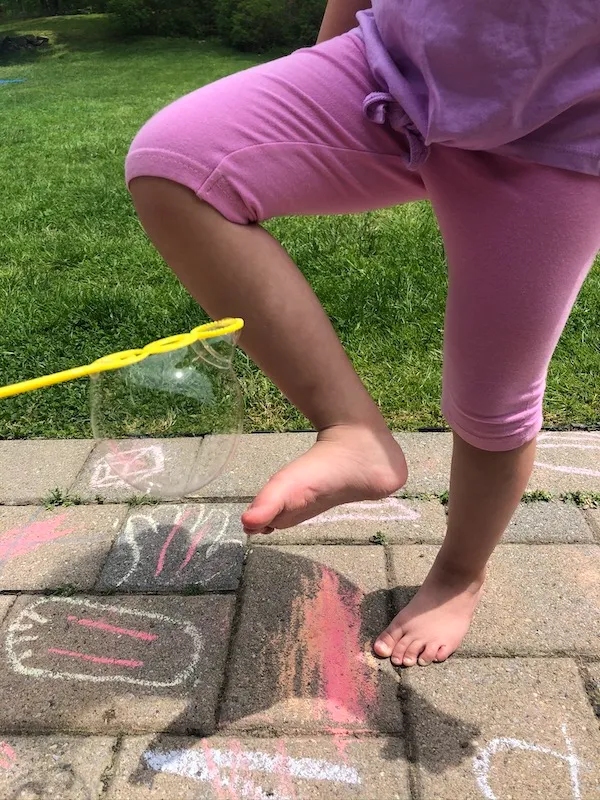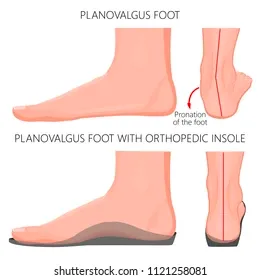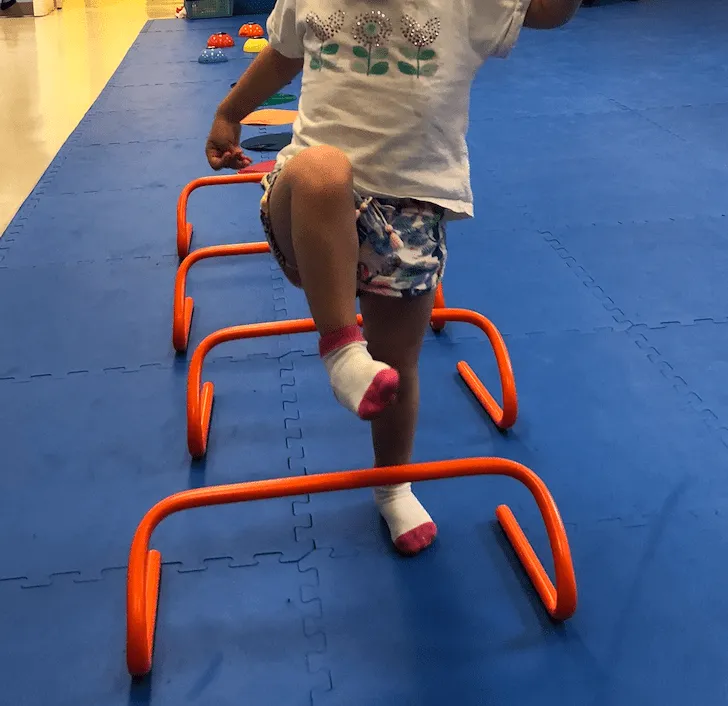From Waddle to Walking: Things to know about your child’s gait
Proper gait pattern is developed through trial and error – your new walker may fall up to 20 times per hour! Every fall is an opportunity to learn and refine their skills. But when is falling too much falling? When is an awkward gait your child experimenting with movement, and when is it a problem?
Read below for an overview of what to expect of your new walker and when it’s time to see a professional!
Learning to Walk
Your child will likely take their first steps between 11 and 15 months of age. At first, they will look like they are falling forward and trying to catch their balance, often taking 3-5 steps before sitting or placing hands on the ground. They will then walk more frequently, but with legs wide and arms held up to increase their base of support for stability and to prepare to catch themselves if they fall forward. Over the next few months, you should notice your child’s arms lower to their sides, feet begin to face forward with legs closer together. It can take up to one year of independent steps to develop good heel strike, push-off, and arm swing! Learn more about how we help children in the early stages of walking!
Flat Feet and Ankle Pronation
The bones that make up the bottom of our feet continue to develop until the age of 7 or 8. Every time your child steps, the pressure and loading through their feet encourage arch development and foot alignment. Therefore, new walkers will have flat feet! So, when are flat feet and pronation a concern? How can we proactively ensure that our children are stepping properly to develop muscles and coordination that will set them up for success?
Ask your pediatrician or visit a pediatric physical therapist if your child is falling frequently, expressing pain, has other developmental delays, or is walking with feet turned inwards, outwards, or if they are walking on their toes.
Excessive pronation and arch collapse can cause abnormal compensations up the chain. Your child’s knees may follow the foot and collapse inward into a “knock-kneed” posture. Similarly, their hips can rotate inward. This is often when you see children W-sitting or running with their feet flying outwards. If left untreated, your child may develop pain, muscle tightness, or abnormal walking and running patterns.
Can kids wear orthotics?
Yes! Many adults wear orthotics in their shoes to provide arch support. This can decrease joint pain, even out pressure in your feet, and improve posture during everyday activities. Children can benefit for all of these reasons, and more! Why? Because they are still growing! As children walk around school, climb on the playground, and run around with friends, the repetitive movements with good alignment will reinforce proper muscle and posture development. Orthotics can range from a small insert for the bottom of a sneaker to one that supports the whole ankle, lower leg, or even more! Orthotists, physiatrists, physical therapists, and pediatricians should collaborate to find the best solution for your child.
Red Flags: See one of our pediatric physical therapists in Mt. Kisco & Port Chester!
If your child has been walking independently for over 6 months, you should begin to see the beginning of a heel-toe walking pattern and the presence of an arch on the inside of their feet. You should consider making an appointment with a pediatric physical therapist if your child is walking with feet turned out, turned in, or if they are walking on their toes.
It is also important to remember that children don’t naturally develop right and left dominance before preschool and handwriting begins. If your child is favoring one leg when navigating stairs or obstacles, it could be due to asymmetries, muscle tightness, or weakness! If you feel your child needs assistance, schedule an appointment today!
About the Author
Tamra Rutfield, PT, DPT has been a Physical Therapist since 2020, when she graduated from Northeastern University. She began working with adults in outpatient orthopedics, but quickly learned she was passionate for helping children develop gross motor skills that will shape their future. As a former gymnast, Tamra understands the importance of developing strength, flexibility, and coordination from an early age. Come see her at Developmental Steps in Westchester County!







